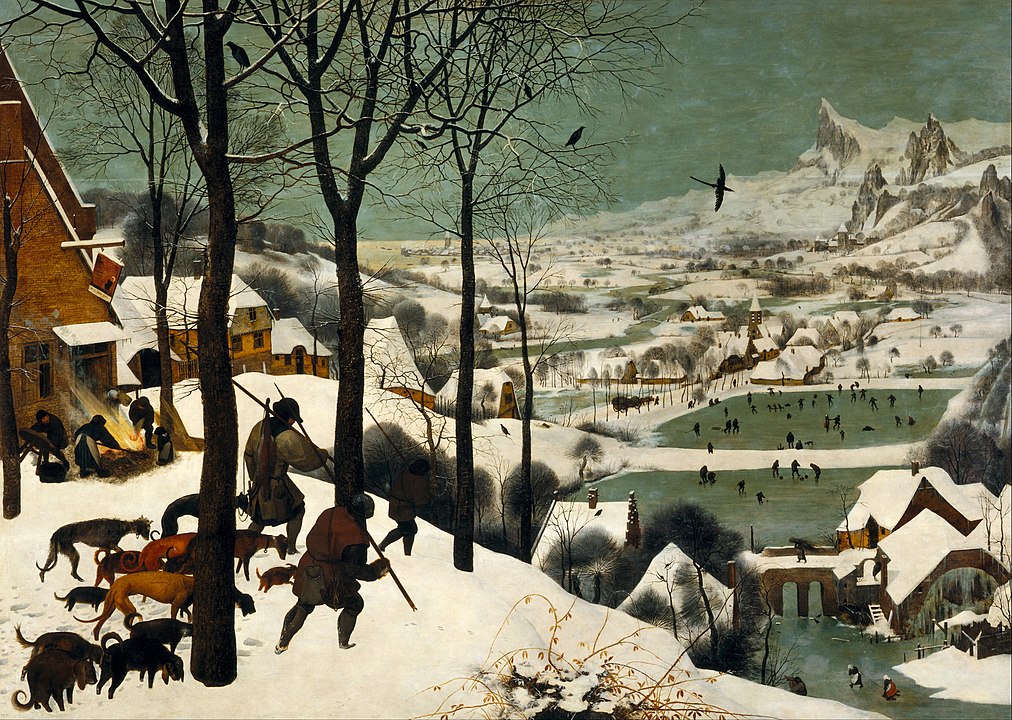
What is Its Significance, and What Type of Art Is It?
Pieter Bruegel the Elder’s Hunters in the Snow is one of the most celebrated paintings of the Northern Renaissance, known for its evocative depiction of winter landscapes and everyday life in the 16th century. Painted in 1565, this masterpiece has captivated viewers for centuries with its intricate details and storytelling depth. In this article, we explore the painting’s current location, its significance in art history, and the artistic style that defines it.
Where Is Hunters in the Snow Located?
Currently, Hunters in the Snow is housed in the Kunsthistorisches Museum in Vienna, Austria. The painting is part of the museum’s impressive collection of works from the Northern Renaissance. This renowned institution holds a wide array of masterpieces, including works by Albrecht Dürer, Hans Holbein, and other prominent artists of the period.
The Kunsthistorisches Museum, founded in 1891, serves as a vital cultural hub in Europe, preserving historical art from various movements. Visitors can view Hunters in the Snow in its permanent collection, where it remains a focal point for those interested in Bruegel’s unique artistic vision.
What Is the Significance of Hunters in the Snow?
1. A Masterpiece of the Northern Renaissance
Bruegel’s Hunters in the Snow is one of the finest examples of Northern Renaissance art. Unlike the Italian Renaissance, which focused on idealized human figures and classical themes, the Northern Renaissance placed emphasis on detailed landscapes, everyday life, and naturalistic representations. Bruegel’s work exemplifies these characteristics, showcasing a vivid winter scene filled with human activity and nature’s beauty.
2. Part of the Months of the Year Series
The painting is part of a series known as The Months of the Year, which Bruegel created for the wealthy Antwerp merchant Niclaes Jonghelinck. Each painting in this series represents different times of the year, and Hunters in the Snow is believed to depict either December or January. It serves as a visual representation of the hardships and joys of winter, from the struggles of hunters returning from an unsuccessful trip to the joy of villagers ice-skating on a frozen river.
3. A Symbolic Representation of Life and Nature
The painting is rich in symbolism. The hunters, with their drooping posture and weary dogs, contrast with the cheerful villagers engaged in winter festivities. This juxtaposition reflects the duality of human experience—struggle and pleasure, hardship and happiness. The dark, leafless trees in the foreground emphasize the cold and barren nature of winter, while the distant landscape creates a sense of vastness and continuity.
4. A Precursor to Landscape Painting
Bruegel’s detailed and expansive landscape in Hunters in the Snow marks a turning point in Western art. Before the Northern Renaissance, landscapes were often secondary to religious or mythological themes. However, Bruegel’s depiction of nature as the main subject laid the foundation for future landscape painting traditions, influencing artists such as Jacob van Ruisdael and even later Romantic painters.
5. Influence on Later Artists and Popular Culture
Bruegel’s Hunters in the Snow has inspired countless artists, writers, and filmmakers. Its composition and mood have been referenced in modern art and media, from film director Andrei Tarkovsky’s Solaris (1972) to contemporary digital artworks. The painting’s evocative sense of nostalgia and realism continues to resonate with audiences today.
What Type of Art Is Hunters in the Snow?
1. Northern Renaissance Art
As a work from the Northern Renaissance, Hunters in the Snow exemplifies the movement’s defining characteristics: meticulous detail, naturalistic settings, and a focus on everyday life. Unlike the grandeur of Italian Renaissance frescoes, Northern Renaissance painters emphasized realism and observation, often portraying common people rather than religious or mythological figures.
2. Genre Painting
The painting is considered a genre scene, which refers to art that depicts ordinary people engaged in daily activities. Bruegel was a master of this style, capturing the lives of peasants, farmers, and villagers with remarkable authenticity. His ability to portray everyday scenes with depth and meaning helped elevate genre painting as a respected artistic category.
3. Landscape Painting
Although it includes human figures, Hunters in the Snow is fundamentally a landscape painting. Bruegel’s panoramic view of the winter scenery dominates the composition, drawing the viewer’s eye to the vast, snow-covered expanse. His ability to create depth and atmosphere through tonal variations and perspective techniques makes this painting one of the earliest masterpieces of landscape art.
4. Oil Painting on Wood Panel
Bruegel used oil paint on wood panel, a common medium for Northern Renaissance artists. Oil paint allowed for intricate detailing and a rich color palette, which Bruegel expertly utilized to create the painting’s soft, muted winter tones. The careful layering of colors gives the scene its depth and texture, making it feel both realistic and atmospheric.
5. Narrative and Symbolic Art
Beyond its technical aspects, Hunters in the Snow is a narrative painting that tells a story. The weary hunters returning with little game, the playful villagers skating and sledding, and the contrast between the dark trees and the bright snowy landscape all contribute to a visual narrative that speaks to the human condition. Additionally, Bruegel’s inclusion of various small details—such as the people gathered around a fire and the birds flying in the distance, adds layers of meaning and interpretation.
Pieter Bruegel the Elder’s Hunters in the Snow remains a timeless masterpiece, admired for its artistic excellence and storytelling depth. Housed in the Kunsthistorisches Museum in Vienna, the painting serves as a key representation of the Northern Renaissance’s emphasis on realism, landscape, and everyday life. Its significance lies in its masterful composition, symbolic richness, and its influence on future generations of artists. As both a genre and landscape painting, Hunters in the Snow captures the essence of winter and the complex interplay between human struggle and seasonal beauty, ensuring its place as one of the most iconic works in Western art history.



